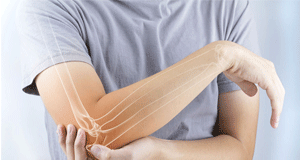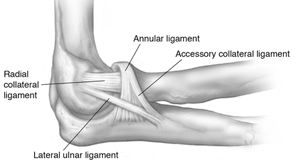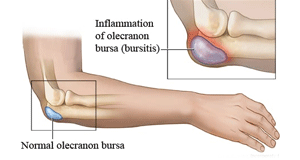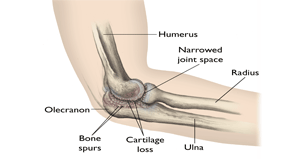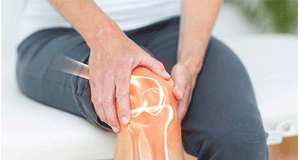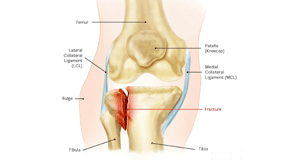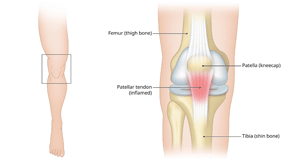Elbow pain Elbow pain is often caused by overuse or injury. Many sports, hobbies and jobs require repetitive hand, wrist or arm movements. Elbow pain can be the result of problems with bones, muscles, tendons, ligaments or joints. Elbow pain may occasionally be due to arthritis. But in general, your elbow joint is much less likely to have wear-and-tear damage ...
Read More »Author Archives: drdevmishra
Elbow Ligament Sprains or Tears
Elbow Ligament Sprains or Tears Elbow Ligament Sprains or Tears(UCL Injury) is an inner elbow injury. It’s most commonly an overuse injury and most famously known for being a baseball pitcher’s injury. If you have a UCL injury you will feel pain and tenderness at your elbow. Treatments include rest, ice, medications and physical therapy. Ulnar Collateral Ligament (UCL) is ...
Read More »Dislocation or separation of elbow
Dislocation or separation of Elbow Dislocation of Elbow occurs when the humerus, ulna and radius (the elbow bones) move out of place where they meet at the elbow joint. This usually occurs when an individual breaks a fall with an outstretched hand while the arm is held straight. A dislocated elbow happens when any of the three bones in your ...
Read More »Bursitis of Elbow
Bursitis of Elbow Bursitis of Elbow occurs in the elbow joint. It’s usually caused by overuse from your job or activities like sports. You’ll probably only need at-home treatments to help your bursa heal. Most people recover in three to six weeks. Elbow bursitis is painful swelling around your elbow joint. Specifically, it’s inflammation in the olecranon bursa — the ...
Read More »Arthritis of Elbow
Arthritis of Elbow Arthritis of Elbow occurs when the cartilage in the elbow becomes worn or damaged. Damage can occur from overuse due to age and repetitive activities, or as a result of an injury, such as a fracture or dislocation. Elbow arthritis can be extremely painful and can interfere with daily tasks that involve bending your arm. If elbow ...
Read More »Knee Pain
Knee Pain The severity of Knee Pain may vary, depending on the cause of the problem. Knee pain is a common problem that affects people of all ages. Knee pain may be the result of an injury, such as a ruptured ligament or torn cartilage. Medical conditions including arthritis, gout and infections also can cause knee pain. Many types of ...
Read More »Tendon Tears of Knee
Tendon Tears of Knee Tendon Tears of Knee is an injury to the tendon connecting your kneecap (patella) to your shinbone. It is also called as Patellar tendinitis. The patellar tendon works with the muscles at the front of your thigh to extend your knee so that you can kick, run and jump. Patellar tendinitis, also known as jumper’s knee, ...
Read More »Fractures of Knee
Fractures of Knee Fractures of Knee is also called as patella fracture is a break in your kneecap, the bone that covers your knee joint. It’s usually caused by a traumatic injury, such as a fall or a blow to your kneecap. A patella fracture can be simple or complex. Some fractures require surgery to repair. Recovery can be long, ...
Read More »Tendinitis of Knee
Tendinitis of Knee Tendinitis of Knee is a condition characterized by inflammation of your patellar tendon. This connects your kneecap (patella) to your shin bone (tibia). Jumper’s knee weakens your tendon, and, if untreated, can lead to tears in your tendon. Causes It is caused by overuse of your knee joint, such as frequent jumping on hard surfaces. It’s usually ...
Read More »Osgood-Schlatter Disease
Osgood-Schlatter Disease Osgood-Schlatter disease is a condition that causes pain and swelling below the knee joint, where the patellar tendon attaches to the top of the shinbone (tibia), a spot called the tibial tuberosity. There may also be inflammation of the patellar tendon, which stretches over the kneecap. Osgood-Schlatter disease is most commonly found in young athletes who play sports ...
Read More » Dr Dev Mishra Best Orthopaedic Doctor in Delhi NCR Ghaziabad
Dr Dev Mishra Best Orthopaedic Doctor in Delhi NCR Ghaziabad

